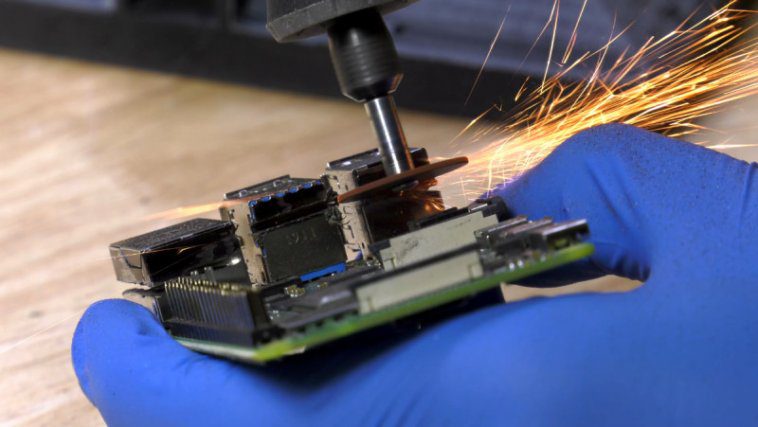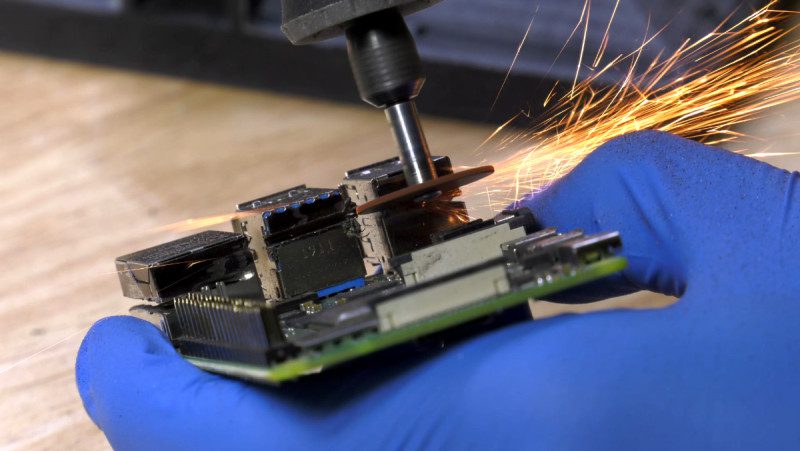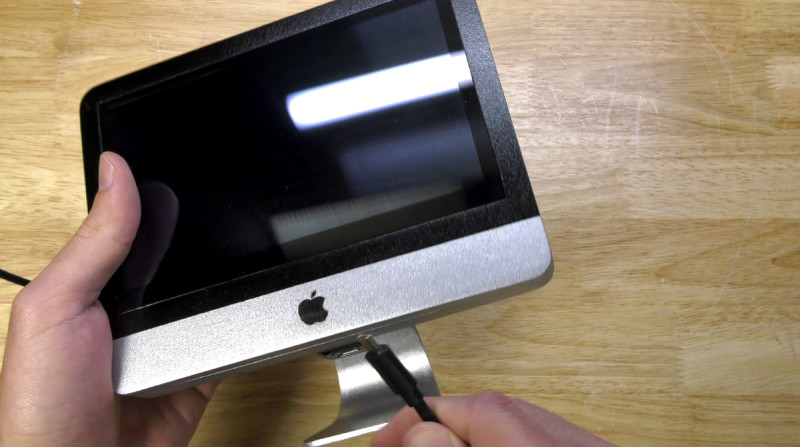The brains behind it is Michael Pick, whose attention to detail is mightily impressive. “I got
the idea after making my first mini computer, the World’s Smallest Gaming PC, and I thought the Apple iMac would make for a fun and interesting build video,” he tells us. Before cracking on with the task, though, he spent much time preparing.
“Like all of my builds, I started by modelling all of the components in a 3D CAD program and this allowed me to see and deal with any potential problems before I even started,” he
explains. “The wiring for this build was rather simple, but if I’m working on something more
complex, a wiring diagram would also come in handy.”
Making the cut
In order to create the smallest possible homage to the iMac, Michael decided to use a
Raspberry Pi 4 computer from the beginning. But he was mindful that the resulting machine still needed to be useable, so he opted for a 7-inch screen.
“I knew there were lots of 7-inch displays readily available for Raspberry Pi and I didn’t want to go smaller because that would have made it pretty hard to use,” he says. The desire for a slim build, however, meant making some amends to his Raspberry Pi 4 to reduce some of its height.
“For this, I needed to break out the rotary tool and the first major modification to Raspberry
Pi involved cutting away the top two USB ports, quickly followed by the removal of the
Ethernet port,” Michael explains, carefully marking where the cuts would go before getting
stuck in. “I didn’t need these ports, and eliminating them made the final build significantly
slimmer. But I had to be careful that I didn’t accidentally cut something I wasn’t supposed to.”
Another bite
Once Raspberry Pi 4 had been modified, Michael was able to begin the final assembly, painting the 3D-printed parts and using a low-profile ribbon cable to connect the screen to
Raspberry Pi while installing iRaspbian as the operating system.
“For entertainment purposes, I think iRaspbian suits this project perfectly,” he says. “I got
very lucky with the release of iRaspbian because it made this project incredibly easy once I
got the hardware sorted out.”
As part of the build, Michael even made a small Apple logo to fit on the front of the case and he stuck to the original colours of black and metal grey. The only part that doesn’t quite fit the aesthetic is the keyboard.
“Apple’s keyboard is clean and slim and there’s nothing that comes close to matching this
with current off-the-shelf mini keyboards,” he notes. “I could potentially make a keyboard
from scratch, but I didn’t have the time. Maybe in the future, this is something I can work on.”
For now, Michael is planning some more mini-computer builds but he also has plans to take
on much larger and complex builds. He’s also been able to get some downtime. “I christened my small iMac with a quick game of Minecraft,” he says.




